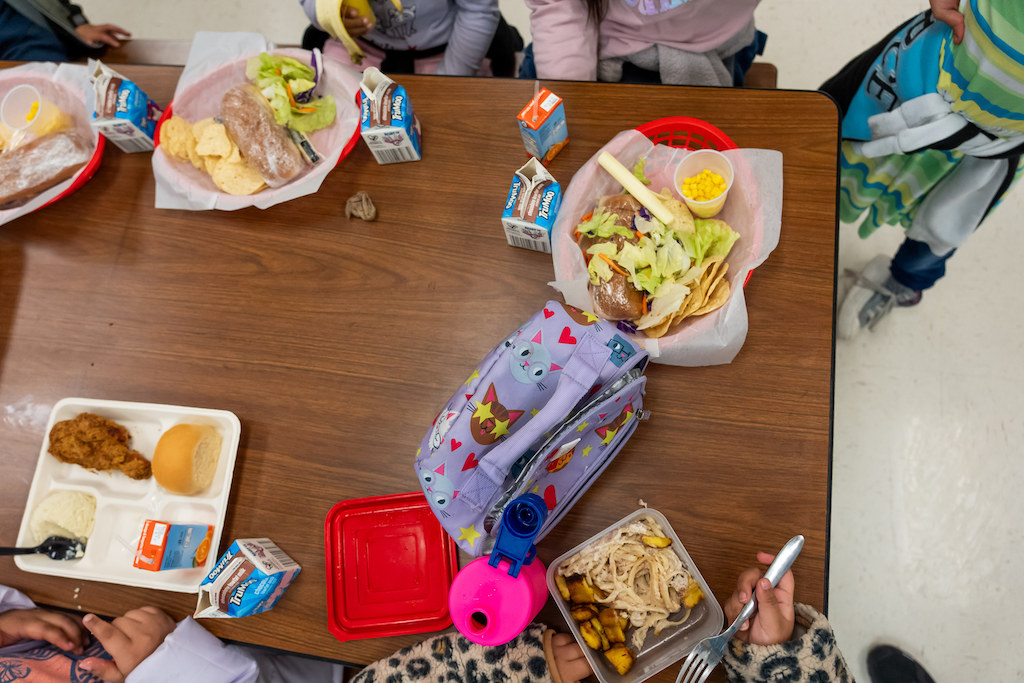
Robbie Sequeira/Stateline
A new, permanent summer grocery program will help nearly 21 million kids across 37 states get enough to eat this year while school’s out.
But 13 states with Republican governors have opted out of the federal program, citing their opposition to what they deride as “welfare” and their unwillingness to cover administrative costs.
Under the new $2.5 billion program created by Congress, eligible low-income households will receive a total of $120 per child over the three summer months when school-based free and reduced-price lunch programs aren’t available.
Washington, D.C., several territories and tribal nations also are participating. Families making up to 185% of the federal poverty level, or $57,720 for a family of four, are eligible.
Funds have already been distributed to families in many states.
The money will be available on an electronic benefits transfer (EBT) card. Households enrolled in state-administered programs can use their benefits at retail stores that participate in the Supplemental Nutrition Assistance Program (SNAP), commonly known as food stamps.
The states that chose not to participate in Summer EBT — Alabama, Alaska, Florida, Georgia, Idaho, Iowa, Mississippi, Oklahoma, South Carolina, South Dakota, Texas, Utah and Wyoming — could decide to opt in next year.
While Oklahoma is not participating in the program, the Cherokee and Chickasaw tribes in the state are. Fourteen states with Republican governors are participating in the program.
The money put on the digital cards comes from the federal government, but states must cover half the cost of administering the program. Those costs include the salaries and benefits of the people running the program, office expenses and outreach efforts.
Iowa officials said the program would cost $2.2 million for the state to administer. Republican Gov. Kim Reynolds said in a news release that federal cash benefit programs don’t provide long-term solutions and that the EBT card “does nothing to promote nutrition” because there are few restrictions on food purchases.
The office of Mississippi Republican Gov. Tate Reeves said the state opted out of the program as part of his rejection of “attempts to expand the welfare state,” according to Mississippi Today.
Texas officials told The Texas Tribune that the federal government didn’t give them enough time to get the program up and running.
Jason Raven, a spokesperson for the South Carolina Department of Education, told Stateline that the state already has two federally funded summer programs that provide free meals to kids 18 and under.
But one advocacy group estimates that close to 150,000 children statewide don’t get enough food even with existing programs, the South Carolina Daily Gazette reported.
One participating state, Tennessee, has already announced it will opt out of the program in 2025, according to The Associated Press.
A spokesperson for Republican Gov. Bill Lee’s office said that Tennessee has other food assistance programs in place.
Change of heart
Three states — Louisiana, Nebraska and Vermont — originally said they would not participate in the summer program, but changed course.
After Louisiana Republican Gov. Jeff Landry’s administration and the state Department of Education opted not to apply for the program, the Louisiana legislature pushed back and included $3.6 million in the state budget to participate.
Vermont Republican Gov. Phil Scott’s administration initially opted out, saying the state wouldn’t be able to afford the administrative costs, according to Vermont Public. But state officials secured a waiver to participate after they said they worked with the federal government to get more flexibility in administering the program, VTDigger reported.
When Nebraska Republican Gov. Jim Pillen changed his mind about opting out of the U.S. Department of Agriculture program in February, it was a visit from schoolchildren that won him over.
“They talked about being hungry, and they talked about the summer USDA program and, depending upon access, when they’d get a sack of food,” Pillen said at a news conference. “And from my seat, what I saw there, we have to do better in Nebraska.”
Alabama’s legislature in May approved $10 million for the state to participate in 2025.
Kelsey Boone, senior child nutrition policy analyst at Food Research & Action Center, which advocates for people struggling with poverty-related hunger, said she expects more states to commit to Summer EBT in 2025, if the program demonstrates success.
“For most states, the trade-off ends up being that for all that’s being spent on administrative costs, the benefits of the program far outweighs it,” Boone said.
“I think there will be a lot of pushback and a lot of people reaching out to their state agencies and their state governors’ offices to, you know, ask them to run the program in 2025, and that will be very powerful,” she said.
Food insecurity
Roughly 17 million households experienced food insecurity in 2022, according to the USDA, compared with 13.5 million in 2021 and 13.8 million in 2020. The agency defines food insecurity as limited or uncertain access to adequate food.
In December 2022, Congress permanently authorized the Summer EBT program, with a start date of this summer.
Since 2010, the USDA has rolled out several versions of this program through various pilot programs. In its evaluation of the program over a decade, the department found that the Summer EBT program reduced childhood food insecurity by a “significant amount” and promoted a healthy diet.
Miriam Cobbs, a single mother of three children who lives in Missouri, praised the program as a lifeline for parents in the summer months. A May survey commissioned by meal-kit brand HelloFresh of more than 450 parents with kids under 18 found that 41% of parents struggle to provide food for their families during school breaks.
“With the food prices being so high, every little bit helps,” Cobbs said. “This is an awesome idea for people that have children at home for the summer. So many children go hungry during these summer months, especially when the parents have little income to work with.”
